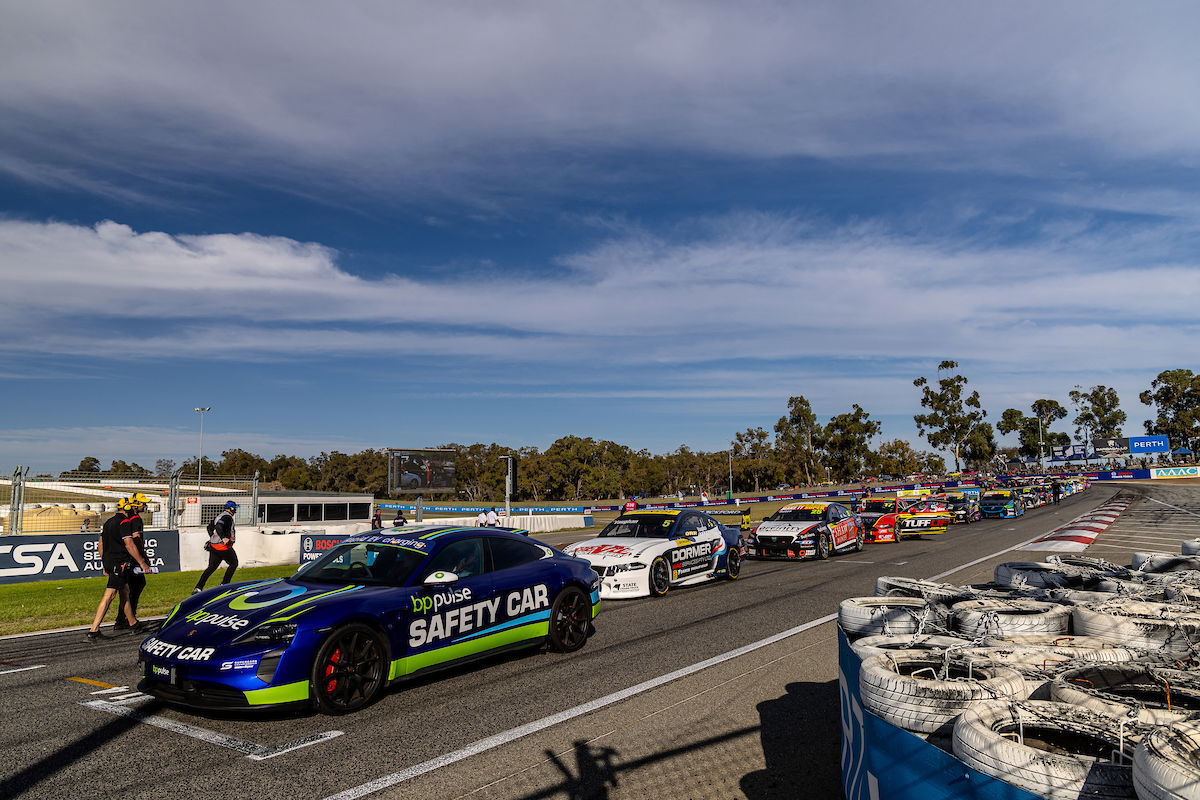

I’ve written about Full Course Yellows before in this column. I need to return to the subject because they’re still not being used across the wider sport, and they should be.
The fact is that every category of circuit based motorsport in Australia, bar Supercars, is a competitor-led class. That means that the vast majority of the participants are wholly or partly funding their racing, rather than the spectators/viewers. That’s the reality.
So, all these licence holders, spending their hard earned coin, deserve to have the most racing laps possible with the least opportunity for damage over a weekend’s activities. That’s especially so when you consider the logistical expenses that go with competing in any national series here.
It comes with the territory in Australia.
Hence, there’s an obligation on organisers to ensure that maximum efforts go into providing those conditions. And the adoption of a properly run Full Course Yellow system here across multiple categories should be, by now, a big part of that.
Spectating at Queensland Raceway at the weekend, it’s clear that it’s sorely needed. It should have been on foot by now, as it is in so many other jurisdictions. But it isn’t.
Safety cars are sometimes necessary and, in the Supercars category, can definitely spice up proceedings. But, for the average amateur competitor, two things matter more; maximizing racing laps and maintaining any hard fought advantage they may have over someone else.
And that’s where the FCY comes into play. When it’s deployed properly, it can take effect faster than a safety car. That then enables whatever recovery crew is required, mobile or corner marshals or both, to get to work without delay.
Literally, as soon as the field is travelling at the required speed (normally 60 km/h) then the work can start.
It may be as simple as removing debris from the circuit. That could well happen with the field only losing half a lap of racing, for instance. Or it could mean that a car recovery can start earlier and finish faster, as there’s no need to wait until the end of a particular lap before the cars are released back to racing speed.
Sound simple? It is. In fact, it’s so simple that the previous ownership crew at Queensland Raceway, under the Racers jurisdiction, were using it in club racing years ago under their ‘clamp-down’ tag.
With MYLAPS already in use in several venues, including Sydney Motorsport Park and One Raceway, it should be rolled out across the country as soon as possible. Take a peek at their website to understand why this is the benchmark system for controlling racing these days, especially in an environment that is seeing a decline in the numbers of volunteer officials available to tracks and organisers.
Smart technology is surely the answer.
From a safety as well as a competitor value point of view, I can’t see why MYLAPS adoption across all circuits is not a priority for the sport.
Now, it’s worth noting that many other countries have been running FCY strategies for some years. It’s often known as a Code 60 Flag.
The operational bugs have long been mostly eradicated elsewhere with plenty of experience to draw on for Motorsport Australia. For the benefit of all, here are the operational rules for the UK system:
The Code 60 Flag (Code 60) will be brought into operation to neutralise a race at the sole decision of the Clerk of the Course provided that all flag points are in direct communication with race control.
1.1. The order to display the flag will be given to flag points following a countdown of not less than 15 seconds and come into operation after an ‘on air’ countdown “5-4-3-2-1 Code 60 flag Code 60 flag”.
1.2. On the order from the Clerk of the Course, the flag will be waved at the start/finish line and simultaneously at all points around the circuit. The flag will continue to be waved for a minimum of one lap and until all cars have visibly slowed down, following which the flag will then be held stationary until the Clerk of the Course withdraws the Code 60 in accordance with 1.6 below.
1.3. Yellow flags will continue to be waved at the incident but green flags will not follow.
1.4. All competing cars, when notified of the Code 60 intervention (by the flag signal, or by any other means) will release the throttle, gently reduce their speed to 60kmh and should remain behind the car in front. Note: It is essential that drivers slow down avoiding sharp braking.
1.5. While the Code 60 is in operation, competing cars may enter the pit lane, but may only re-join the track when signalled to do so by an official/marshal.
1.6. When the Clerk of the Course orders withdrawal of the Code 60 there will be a radio message to all posts “prepare to go green in less than 30 seconds” and be withdrawn after a countdown “5-4-3-2-1 Green Flag, Green Flag”. Code 60 will then immediately be replaced by a waved green flag. The waved green flag will be shown simultaneously at all posts.
1.6.1. Racing will resume as soon as the green flag is displayed.
1.7. Overtaking is strictly forbidden until the green flag is displayed. Any infringements may be penalised by a time penalty of one minute, or more.
1.8. Each lap covered while the Code 60 is in operation will be counted as a race lap unless specified to the contrary in campionship regulations
All the above is very doable. It should be instigated here without delay for all. Supercars can run a different system if they so choose, with a group of full time professional drivers, but everyone else should be operating under one system only.
The next step for Supercars and the Bathurst 12 Hour would be moving to “slow zones” as used in some European GT races and the World Endurance Championship. That literally means that cars are slowed down only for a portion of the track, rather than the whole lap.
Hopefully, this is on the radar as it’s a great way of keeping practice sessions rolling and clearing debris or easily accessible cars quickly and safely.





















Discussion about this post